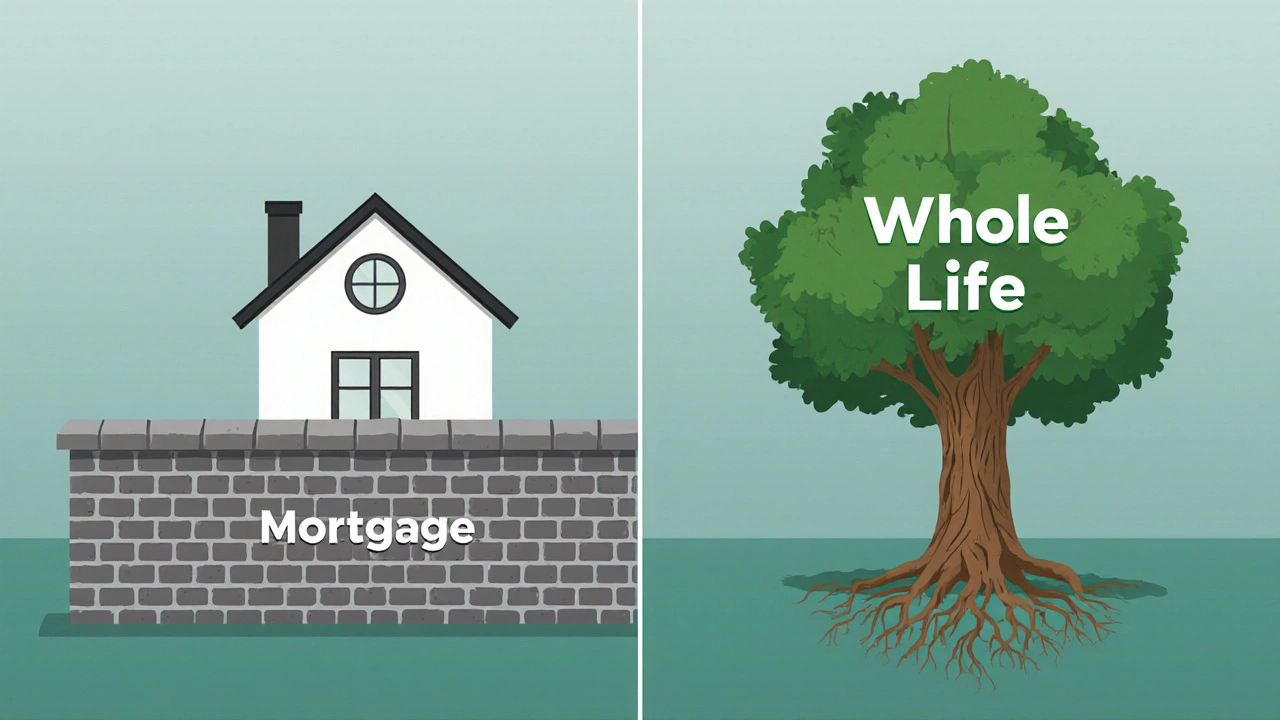When it comes to protecting your loved ones, life insurance is the go‑to safety net. But many Australians wonder: can I have two life insurance policies at the same time? The short answer is yes - the law doesn’t forbid it, and insurers usually allow it as long as you meet certain criteria.
Why would anyone need more than one policy?
Holding a single policy can feel like a one‑size‑fits‑all solution, but life changes fast. You might start with a cheap term cover to protect a mortgage, then add a whole‑life policy later for estate planning. Having two policies lets you layer benefits: a term policy for high‑coverage, low‑cost protection during working years, and a permanent policy that builds cash value for retirement or legacy goals.
- Term life insurance provides a fixed death benefit for a set period, usually 10-30 years, and is the most affordable option for young families.
- Whole life insurance offers lifelong coverage and a cash‑value component that grows tax‑deferred.
- When you combine them, you can keep the cheap term premium while the whole‑life cash builds a financial cushion.
Can you legally own two policies?
Australian law doesn’t set a hard limit on the number of policies you can own. The key legal concept is insurable interest: you must stand to suffer a genuine loss if the insured person dies. As long as each policy meets that requirement, you’re free to buy as many as you need.
Regulators, such as the Australian Prudential Regulation Authority (APRA), expect insurers to assess whether a prospective policyholder can actually afford the total premiums. That’s where underwriting comes in.
Underwriting checks for multiple policies
When you apply for a second policy, the insurer will pull a fresh underwriting file. They look at:
- Existing coverage - they’ll ask for details of any current policies.
- Financial capacity - can you comfortably pay both premiums?
- Health status - a new health declaration is required.

How to apply for a second policy - step by step
- Gather details of any existing life insurance - policy number, sum insured, premium amount.
- Check your budget - use a simple spreadsheet to see how much extra you can afford each month.
- Decide what gap you want to fill - extra mortgage protection, estate planning, or cash‑value growth.
- Shop around - request quotes from at least three Australian insurers.
- Complete the application - be honest on the health questionnaire; inaccuracies can void the cover.
- Undergo medical checks if requested - most term policies for high sums still require a blood test.
- Review the policy documents - confirm the death benefit, premium schedule, and any exclusions.
Once approved, you’ll receive a policy certificate. Keep it safe and update your beneficiary designations if your personal situation changes.
Comparison of common life insurance types
| Feature | Term Life | Whole Life | Universal Life |
|---|---|---|---|
| Coverage period | 10‑30 years | Lifetime | Flexible term |
| Cash value | None | Builds slowly | Adjustable growth |
| Premium trend | Level or increasing | Level (guaranteed) | Can vary with market |
| Typical use | Mortgage or income replacement | Estate planning, legacy | Combination of protection & investment |
| Affordability | Most affordable | Higher cost | Mid‑range, depends on interest rates |
Common pitfalls and how to avoid them
Getting two policies sounds simple, but many people slip into traps that cost them money later:
- Over‑insuring. Buying more coverage than you need can waste premium dollars. Run a needs analysis every 3‑5 years.
- Duplicate beneficiaries. If both policies list the same beneficiary with the same share, you might unintentionally leave nothing for other heirs.
- Ignoring policy exclusions. Some term policies exclude death from suicide within the first two years - make sure you understand the fine print.
- Neglecting premium payments. If you miss a payment on either policy, the insurer may lapse the cover, leaving a gap when you need it most.
To stay on track, set up automatic payments, keep a folder with all policy documents, and review your coverage after major life events (marriage, birth, career change).

Quick checklist - before you add a second policy
- Confirm existing coverage amount and purpose.
- Calculate total premium as a percentage of disposable income.
- Identify the specific risk you’re filling (mortgage, education, estate).
- Gather health records and recent medical test results.
- Request quotes from at least three reputable Australian insurers.
- Read the product disclosure statement (PDS) for exclusions and claim process.
Bottom line
There’s no blanket rule stopping you from holding two life insurance policies in Australia. The real limits are your financial ability, insurable interest, and the insurer’s underwriting guidelines. By understanding why you need a second policy, doing the math, and following a clear application process, you can layer protection without breaking any rules.
Frequently Asked Questions
Can I have two term life policies at the same time?
Yes. Most insurers allow multiple term policies as long as you can afford the combined premiums and you maintain insurable interest for each. It’s a common strategy for covering different debts or stages of life.
Will applying for a second policy affect my existing one?
No. Each policy is underwritten separately. However, the new insurer will ask for details of any existing cover, which could influence the premium they offer.
Is there a maximum total coverage I can hold?
There’s no statutory cap, but insurers typically limit total premiums to a percentage of your income (often 5‑10%). Very high sums may trigger additional medical underwriting.
Do I need to name different beneficiaries for each policy?
Not required, but it can help you control how the payout is split. If you want separate funds for a mortgage and for a child’s education, assign distinct beneficiaries or specify percentages.
What happens if I miss a premium on one of the policies?
A missed premium may put that policy into a grace period or cause it to lapse, depending on the insurer’s terms. The other policy remains unaffected, but you lose that layer of protection.







